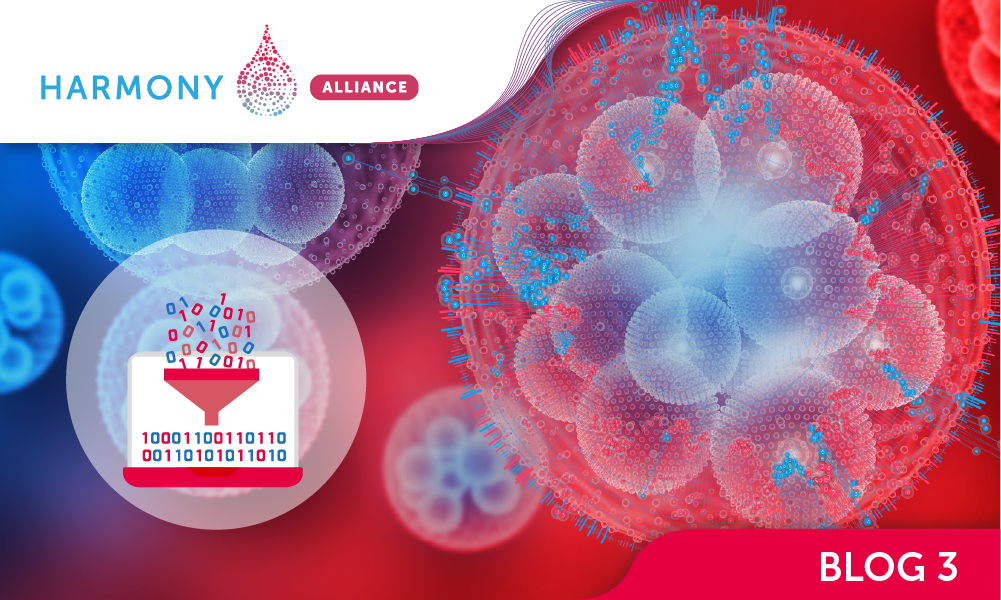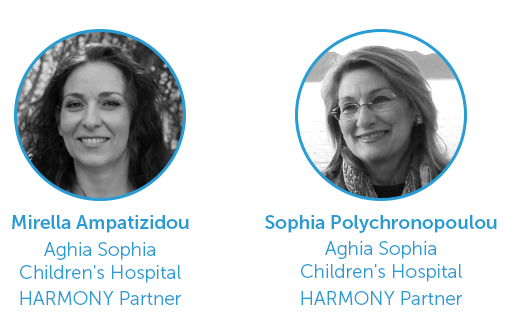
New Research Project aims to improve risk stratification in children with acute lymphoblastic leukemia (ALL).
ALL is curable in most children, but the treatment protocols are intensive and the side effects are considerable. A new HARMONY Alliance Pediatric Research Project team will investigate if the speed of reduction of leukemia cells in the bone marrow correlates with the risk of relapse. This may help clinicians to decide if the treatment should be intensified or de-intensified.
ALL is the most common blood cancer in children. Around 90% of children with ALL are cured, depending on the protocol applied and the supportive care that they receive. However, the treatment protocols are intensive, and the side effects are considerable. A less intensive treatment will probably suffice in some pediatric patients, but the key challenge is to identify these low-risk patients. At the other end of the spectrum, there is a subgroup of high-risk patients in which the treatment should be intensified. With its unique Big Data Platform, the HARMONY Alliance offers excellent opportunities to develop methods to distinguish risk groups more reliably.
New Research Project in Childhood Cancer
A new HARMONY Alliance research project will study the prognostic value of the speed of reduction of the number of leukemic cells in response to treatment. Initiated by Mirella Ampatizidou and Sophia Polychronopoulou of the Aghia Sophia Children's Hospital in Athens, Greece, this project will focus on treatment response in children with B-ALL and T-ALL, the two main subtypes of ALL.
Mirella Ampatizidou: “Modern risk classification algorithms use so-called ‘minimal residual disease’ (MRD) as one of the parameters to predict treatment response and risk of relapse in children with ALL. MRD refers to the percentage of the remaining leukemia cells within the bone marrow after any type of treatment. The prognostic value of MRD at different time points has been investigated across therapeutic protocols, but only in terms of absolute MRD values.”
Sophia Polychronopoulou: “For some years, we have noticed that not only the absolute value of MRD makes a difference in the prognosis of our patients, but also the speed at which the tumor burden is decreased by a specific treatment. For instance, a patient with an MRD value of 0.08% on both days 15 and 33 of the first course of treatment could have a higher relapse risk than a patient who presents with an MRD value of 8% on day 15 and 0.08% on day 33. Despite the lower absolute MRD value on day 15, the first patient may have a higher relapse probability because there is no improvement in MRD between day 15 and 33.”
The speed of MRD reduction appears to differ between genomic subtypes of ALL, suggesting that there is a difference in the underlying biology and genomics of the disease. Therefore, following the log reduction of the number of leukemia cells could provide valuable information about the prognosis of patients.”
Sophia Polychronopoulou: “This method is cheap and easy to apply because it only requires reanalyzing information that is already available. We have tested our hypothesis in data from 250 patients and the results look promising. The HARMONY Big Data Platform is highly suited to validate our preliminary results because it contains data from more than 5,000 ALL cases from different pediatric study groups. This will enable us to draw solid conclusions and propose a refined risk stratification in ALL.”
Mirella Ampatizidou:
“If this project is successful, MRD log reduction can be incorporated in the risk stratification algorithms that are used by clinicians. That would mean that the treatment could be intensified in children who do not show the expected MRD log reduction. And the other way around: patients with an excellent MRD low reduction rate could receive a less intensive treatment that is associated with fewer side effects. This is very important because children with childhood cancer still have their lives ahead of them.”
Leadership of the HARMONY Alliance Research Project: Exploring the prognostic significance of minimal residual disease (MRD) in children with ALL:

More about HARMONY Alliance activities in pediatric blood cancer:
#Bigdataforbloodcancer: Revolutionizing the use of big data in Hematologic Malignancies research.
When the HARMONY Alliance started in 2017, the hematology community was embarking on a journey towards embracing data sharing and recognizing the transformative power of big data. HARMONY set a crucial milestone when this endeavor was only starting. By laying the foundation for future collaborations, advancements, and discoveries that would incorporate state-of-the-art technologies in the field of hematology, HARMONY is making its contribution to improve the understanding and treatment of blood disorders. Now, just almost seven years later with 128 partners from 28 countries, we have transformed both the sharing and use of data. We have developed the Big Data Platform with a data lake that has identified over 160,000 patient records. All data is protected using a unique anonymization and security process. In more than 30 research projects, groundbreaking research is being carried out with the help of advanced customized data analytic services, including AI modelling.
Receive the latest news. Click here to subscribe!